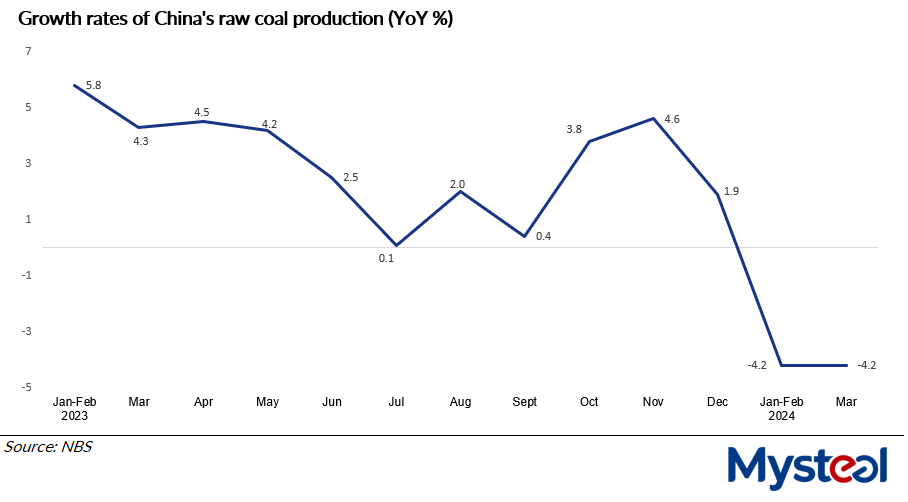China’s total output for raw coal for all uses dropped by 4.2% on year to 399.33 million tonnes in March, sending the total output during the first quarter to some 1.11 billion tonnes, down by 4.1% compared with the same period last year, according to the latest release from China’s National Bureau of Statistics (NBS) on April 16.

On a daily basis, the NBS data showed that China’s daily raw coal production during March increased slightly to 12.88 million tonnes/day – higher than the January-February average of 11.75 million t/d but still below the March 2023 average of 13.46 million t/d.
About three-quarters of China’s coal production consists of steaming coal used mostly for producing electricity, and during March, thermal power generation only increased by a marginal 0.5% on year to reach 520.1 billion kWh, other NBS data show. The tiny year-on-year rise reflected the fact that the early arrival of warmer weather this year reduced the need for the thermal power utilities to lift production significantly for household heating, as Mysteel Global has reported.
On the other hand, early spring rains in southern and southwest China have refilled dams there, enabling China’s hydroelectric plants to increase output. The NBS data show that in March, hydro power production reached 71.2 billion kWh, higher by 3.1% on year and also higher by 2.3% from the average level in the first two months this year.
Meanwhile, production of coking coal last month was also impacted by the pullback in steel production among Chinese steelmakers, which served to dampen demand for coking coal from steel mills and independent metallurgical coke manufacturers.
Last month, coke production in China fell at a faster pace than that during January-February, with coke output slipping by 6% on year to about 39.37 million tonnes, the NBS statistics show. Consequently, the country’s year-to-date output of coke stood at 119.89 million tonnes, down by a tiny 0.5% from a year earlier, according to NBS.
Written by Winnie Han










